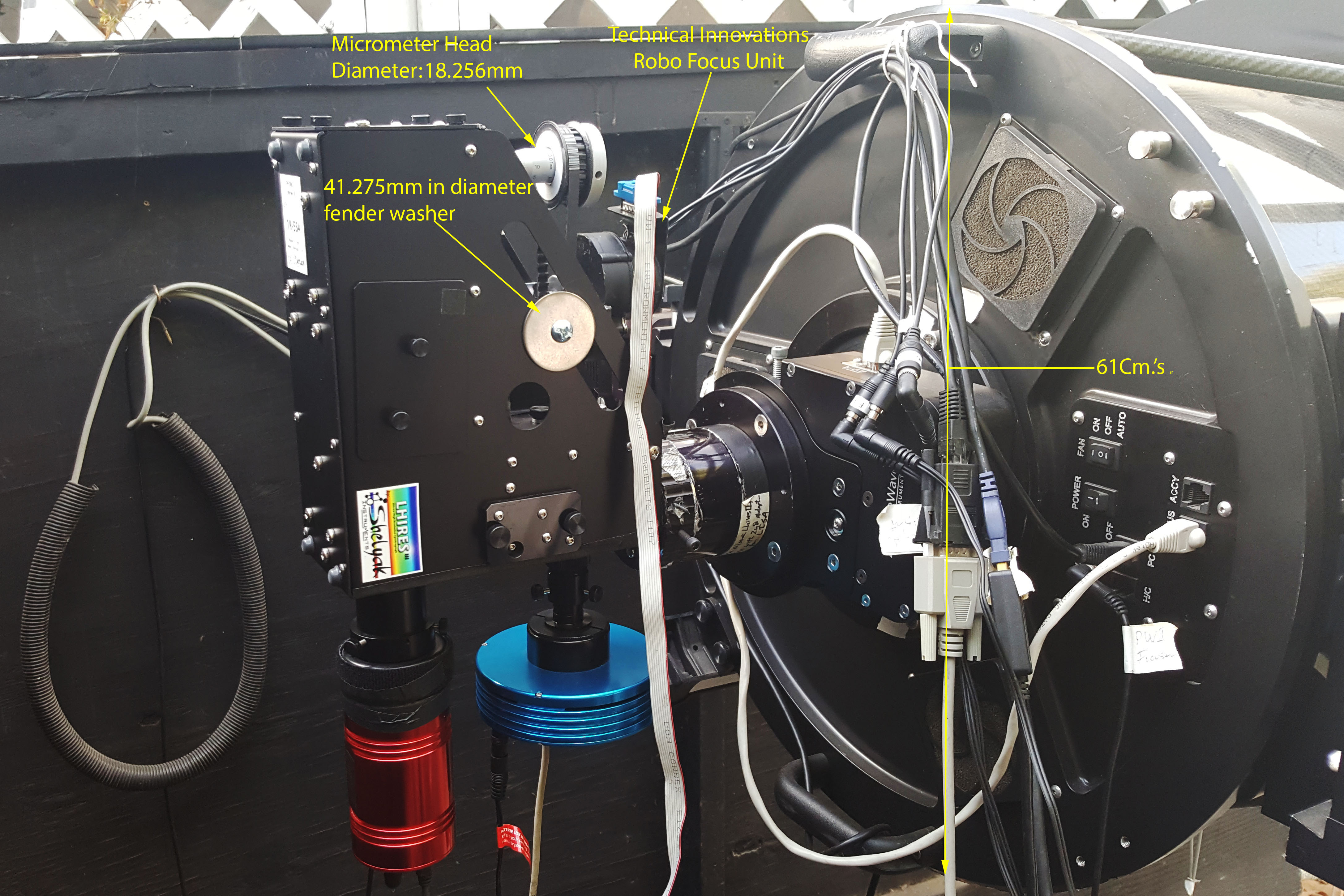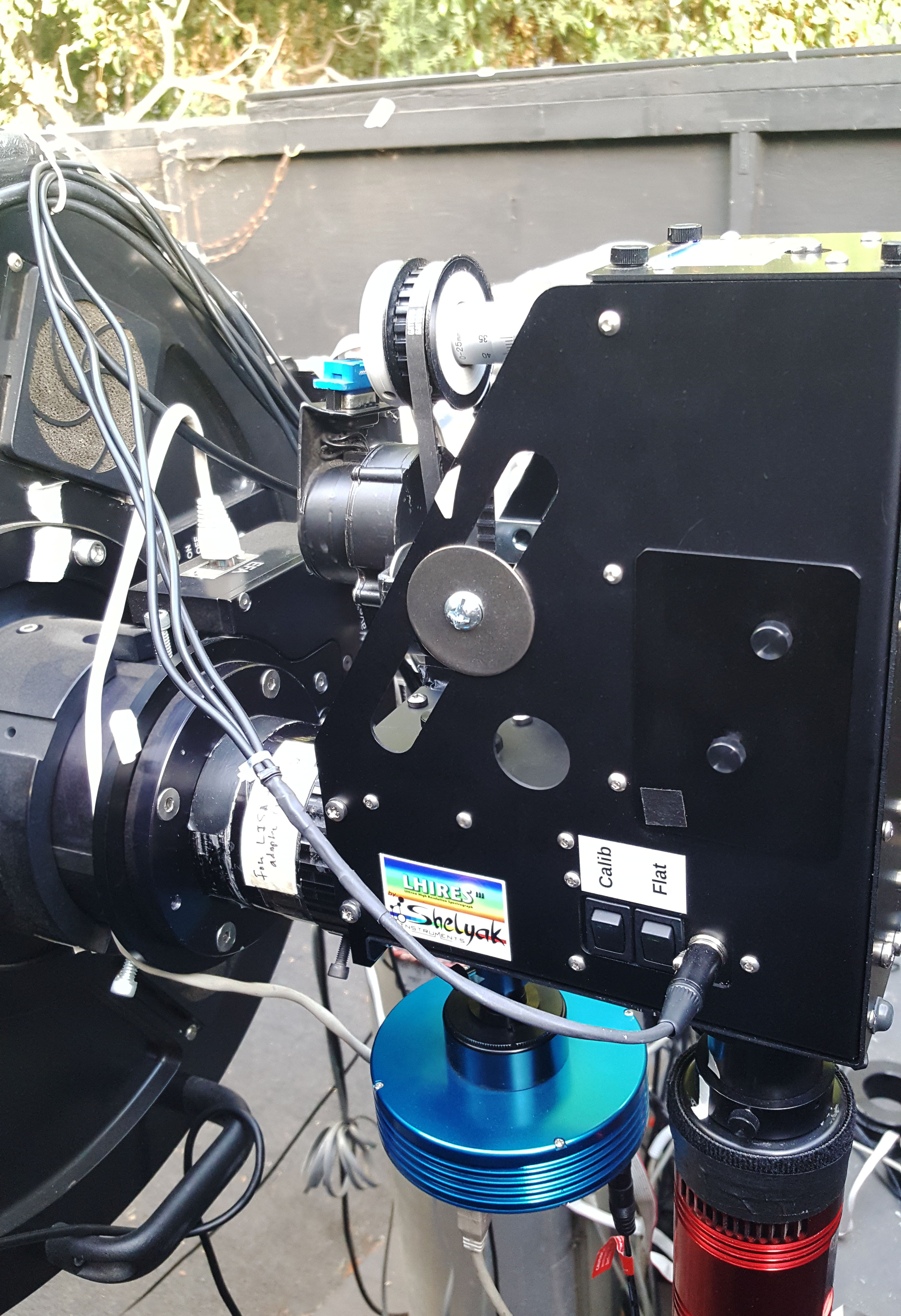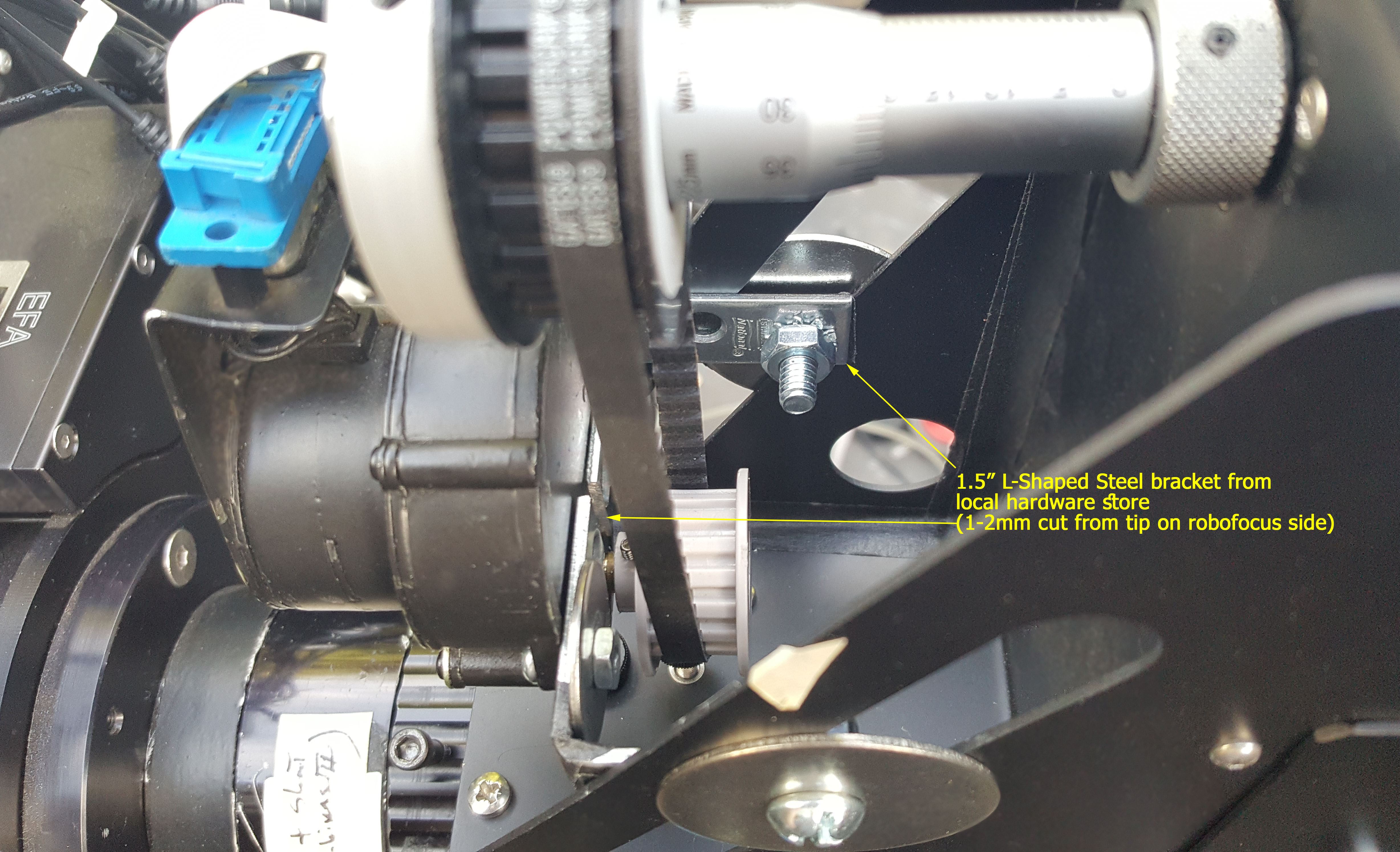This wasn't very difficult as I was already using a Technical Innovation's robofocus controller (via the remote power module) to control the calibration/flat lamps for my LhiressIII and LISA.
I had an extra Robofocuse stepper motor and the only extra items I needed where 2 sprockets, an 11" long toothed-belt (all 3 ordered from technical innovations), 2x 1.5" (38mm) small steel brackets from the local hardware store, and some bolts, fender, & lock washers. Here are some pictures of the installed system on my LhiresIII attached to the CDK17(large images):



[NOTE: The configuration above is my normal AP park position 1. I shoot at zenith, then setting in the west and LhiresIII is easier to access while imaging.]
Only other modification I made were to slightly enlarge the holes where the robofocus connects to the steel brackets, cut 1-2mm off their tips to more easily fit btw the LhiresIII
angled sides. I aligned the sprockets and belt to be parallel to the (grating) base of the LhiresIII at the mid-point of my micrometer travel btw Ha and H10 (roughly micro readings
1970 and 1143 respectively) which came out to be 1555m. This was necessary as the micrometer rises and sets btw the major balmer wavelengths. After a few tests, I found by
keeping the belt at 85-90% tightness at its parallel (1555m) position, there were no issues of binding or bending the micrometer btw 2000 and 1100m.
With regards to Robofocus control, I'm using the standard Robofocus V5.2.0 software, firmware version 3.20. I assigned the micrometer reading of 2000m as Robofocus position 50000,
max focus travel at robofocus position 50500. After testing, I got these robofocus step readings for the basic balmer series:
Ha 48742
Hb 20324
CaK 5872
Only issue is moving from Ha to Hb is really slow, you can only move a maximum of 9999 steps at a time, so going btw these two wavelengths takes 60-90 seconds.
But the ease of adjusting the calibration lines inside while watching the monitor and avoid going outside (3-4 times adjusting the micrometer) is an enormous time savings (plus
winter is getting cold!). The only time I need to go out now is to rotate the LhiresIII internal collminator lens when imaging spectra shortwards of Hb (takes less than
15 seconds to do this). Let me know if anyone has questions.
James